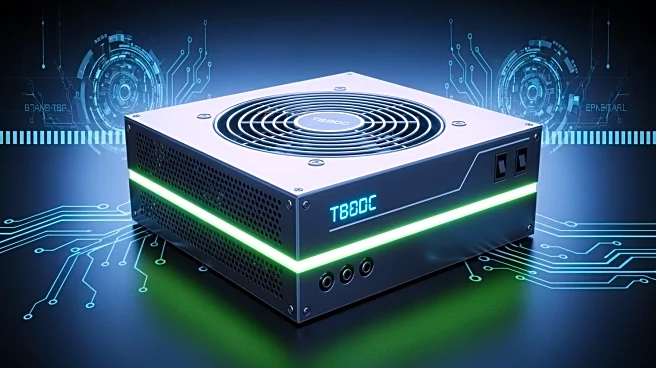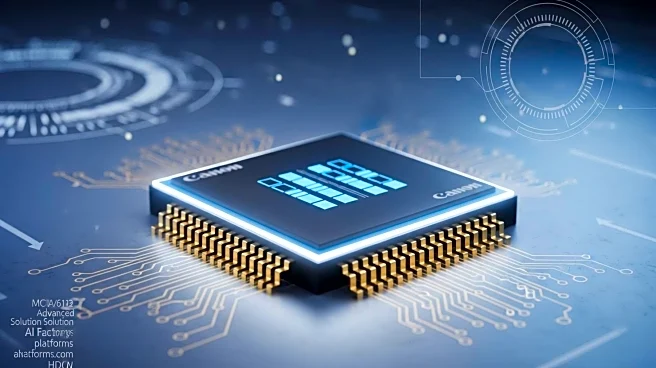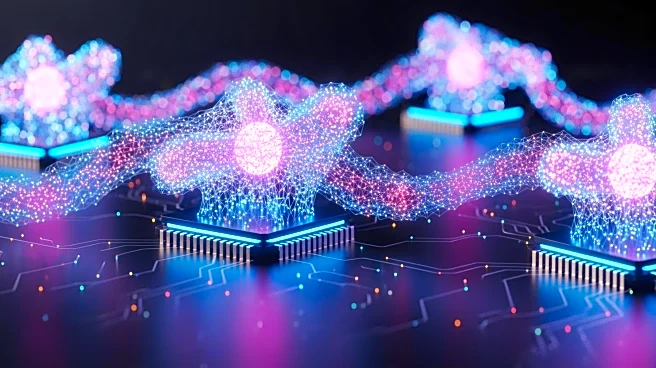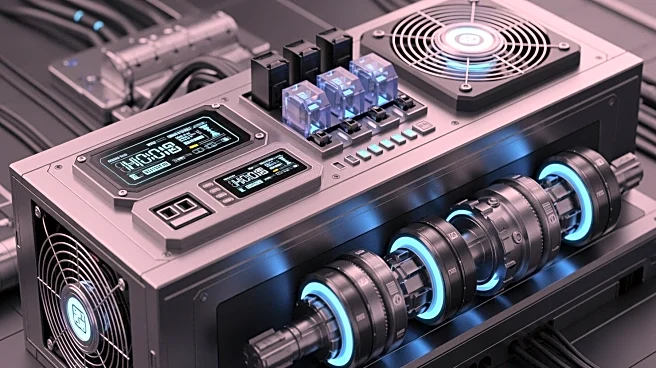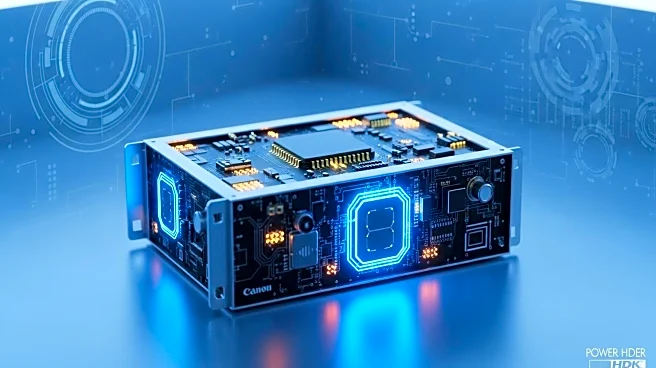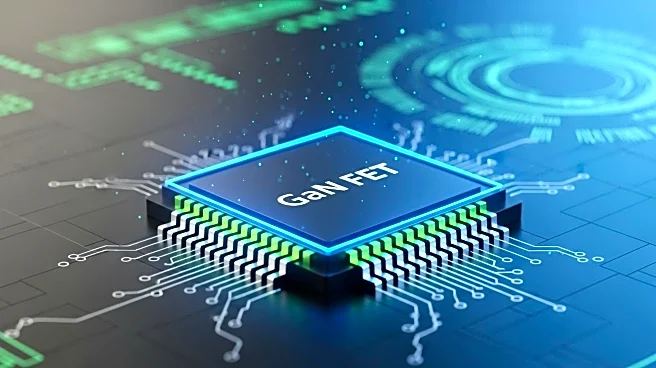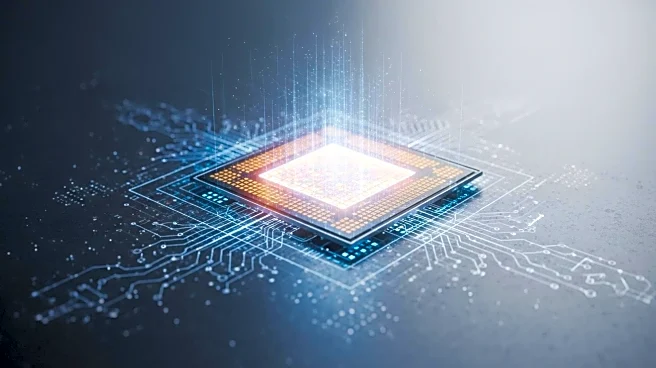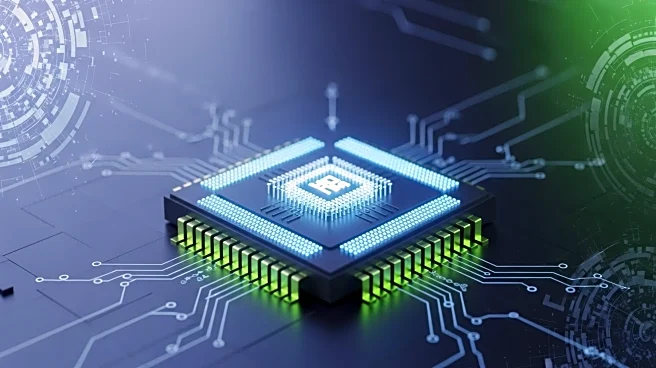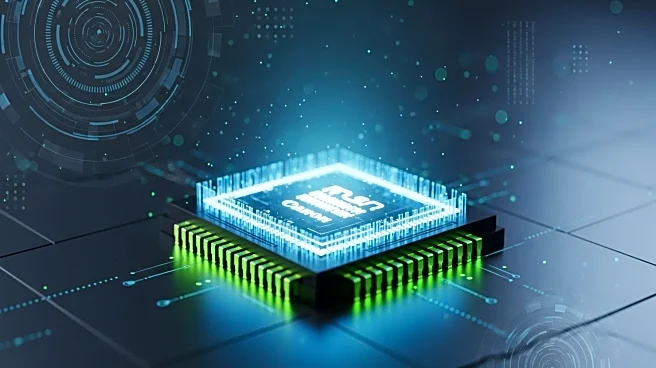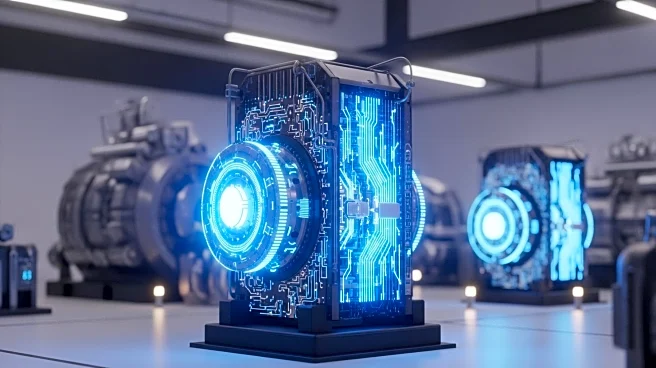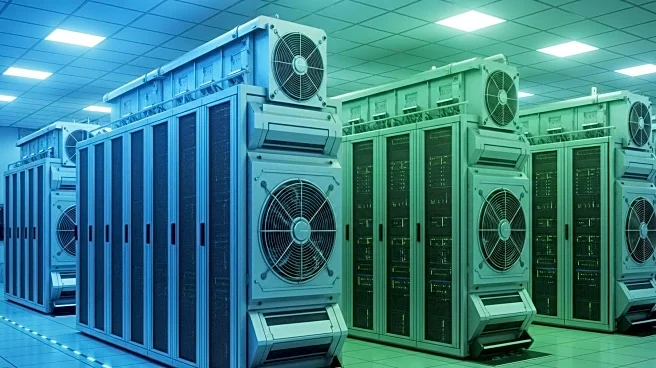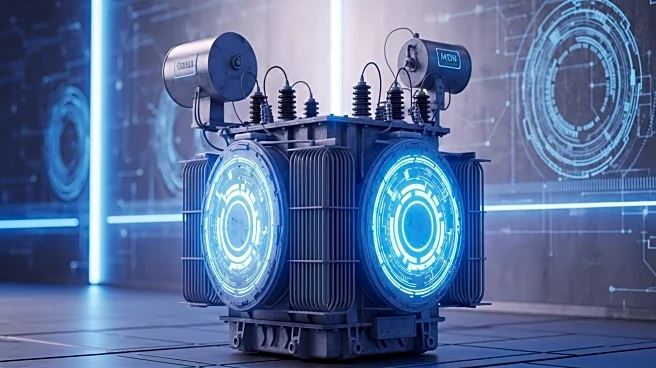What's Happening?
Schneider Electric has announced its commitment to supporting the transition to 800 VDC power architectures, essential for next-generation high-density rack systems in data centers. This move is driven by the need for higher power densities and greater
efficiency in modern computing environments. Schneider Electric is collaborating with NVIDIA to develop an 800 VDC sidecar capable of powering racks up to 1.2 MW, supporting NVIDIA's next-generation GPUs. The sidecar converts AC power into 800 VDC, delivering megawatt-scale rack power efficiently and safely. Schneider Electric's approach integrates power conversion, protection, and metering, ensuring systems are efficient, safe, and scalable. The company emphasizes a system-level innovation strategy, focusing on the entire power ecosystem from grid to server.
Why It's Important?
The transition to 800 VDC power systems is crucial for the future of data centers, particularly as they evolve to support AI and high-performance computing applications. Schneider Electric's innovations promise enhanced efficiency and safety, which are vital for the reliability of these systems. By collaborating with NVIDIA, Schneider Electric is positioned to influence the development of AI infrastructure, potentially shaping the industry's standards for power delivery and operational efficiency. This development could lead to significant advancements in AI applications, impacting industries reliant on high-density computing power.
What's Next?
Schneider Electric's collaboration with NVIDIA is expected to continue, with further innovations likely to emerge as the demand for high-density computing power grows. The industry may see broader adoption of 800 VDC systems, prompting other companies to innovate in power infrastructure. Stakeholders, including data center operators and technology companies, will need to adapt to these changes, potentially investing in new technologies to remain competitive.
Beyond the Headlines
The shift to 800 VDC systems may have long-term implications for energy consumption and sustainability in data centers. As these systems become more efficient, they could reduce the environmental impact of high-density computing, aligning with global sustainability goals. Additionally, the collaboration between Schneider Electric and NVIDIA highlights the importance of partnerships in driving technological advancements.
